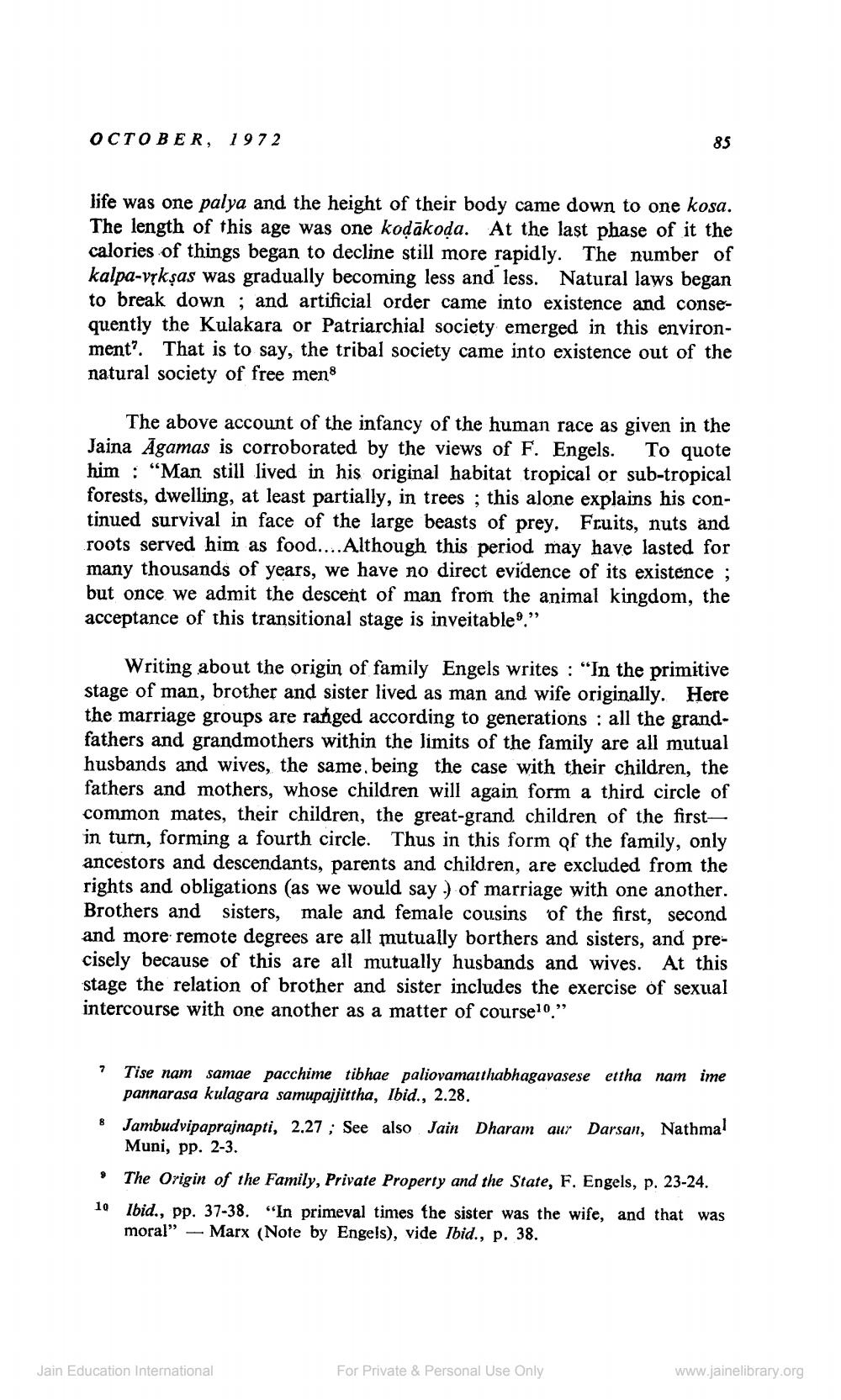________________
OCTOBER, 1972
life was one palya and the height of their body came down to one kosa. The length of this age was one kodākoda. At the last phase of it the calories of things began to decline still more rapidly. The number of kalpa-vīkşas was gradually becoming less and less. Natural laws began to break down ; and artificial order came into existence and consequently the Kulakara or Patriarchial society emerged in this environment?. That is to say, the tribal society came into existence out of the natural society of free men
The above account of the infancy of the human race as given in the Jaina Āgamas is corroborated by the views of F. Engels. To quote him : "Man still lived in his original habitat tropical or sub-tropical forests, dwelling, at least partially, in trees ; this alone explains his continued survival in face of the large beasts of prey. Fruits, nuts and roots served him as food.... Although this period may have lasted for many thousands of years, we have no direct evidence of its existence ; but once we admit the descent of man from the animal kingdom, the acceptance of this transitional stage is inveitable.”
Writing about the origin of family Engels writes : "In the primitive stage of man, brother and sister lived as man and wife originally. Here the marriage groups are ranged according to generations : all the grandfathers and grandmothers within the limits of the family are all mutual husbands and wives, the same, being the case with their children, the fathers and mothers, whose children will again form a third circle of common mates, their children, the great-grand children of the firstin turn, forming a fourth circle. Thus in this form of the family, only ancestors and descendants, parents and children, are excluded from the rights and obligations (as we would say .) of marriage with one another. Brothers and sisters, male and female cousins of the first, second and more remote degrees are all mutually borthers and sisters, and precisely because of this are all mutually husbands and wives. At this stage the relation of brother and sister includes the exercise of sexual intercourse with one another as a matter of course 0.”
7 Tise nam samae pacchime tibhae paliovamarthabhagavasese ettha nam ime
pannarasa kulagara samupajjittha, Ibid., 2.28. Jambudvipaprajnapti, 2.27 ; See also Jain Dharam aur Darsan, Nathmal
Muni, pp. 2-3. • The Origin of the Family, Private Property and the State, F. Engels, p. 23-24. 10 Ibid., pp. 37-38. "In primeval times the sister was the wife, and that was
moral" - Marx (Note by Engels), vide Ibid., p. 38.
Jain Education International
For Private & Personal Use Only
www.jainelibrary.org




